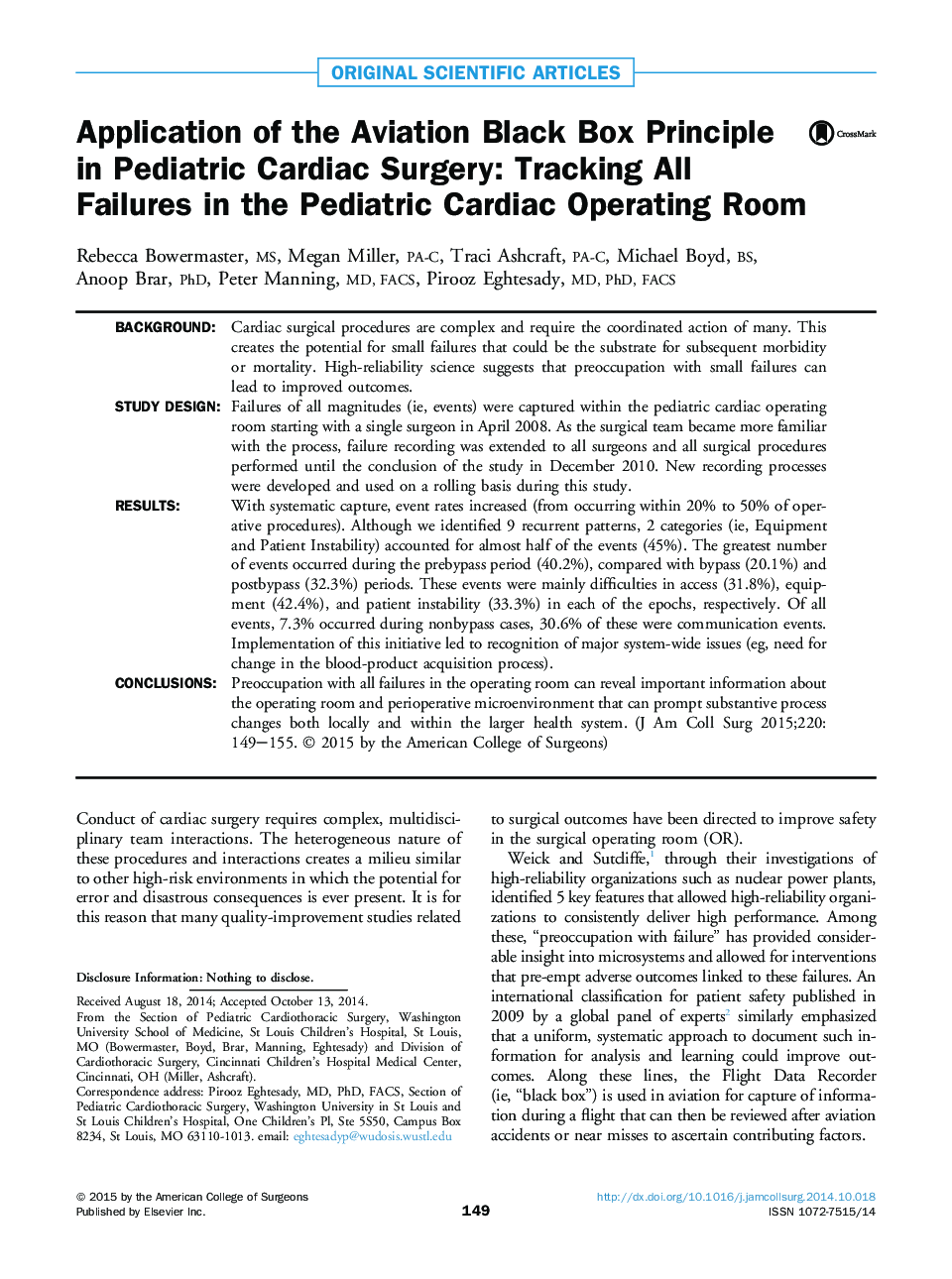| Article ID | Journal | Published Year | Pages | File Type |
|---|---|---|---|---|
| 6252728 | Journal of the American College of Surgeons | 2015 | 10 Pages |
BackgroundCardiac surgical procedures are complex and require the coordinated action of many. This creates the potential for small failures that could be the substrate for subsequent morbidity or mortality. High-reliability science suggests that preoccupation with small failures can lead to improved outcomes.Study DesignFailures of all magnitudes (ie, events) were captured within the pediatric cardiac operating room starting with a single surgeon in April 2008. As the surgical team became more familiar with the process, failure recording was extended to all surgeons and all surgical procedures performed until the conclusion of the study in December 2010. New recording processes were developed and used on a rolling basis during this study.ResultsWith systematic capture, event rates increased (from occurring within 20% to 50% of operative procedures). Although we identified 9 recurrent patterns, 2 categories (ie, Equipment and Patient Instability) accounted for almost half of the events (45%). The greatest number of events occurred during the prebypass period (40.2%), compared with bypass (20.1%) and postbypass (32.3%) periods. These events were mainly difficulties in access (31.8%), equipment (42.4%), and patient instability (33.3%) in each of the epochs, respectively. Of all events, 7.3% occurred during nonbypass cases, 30.6% of these were communication events. Implementation of this initiative led to recognition of major system-wide issues (eg, need for change in the blood-product acquisition process).ConclusionsPreoccupation with all failures in the operating room can reveal important information about the operating room and perioperative microenvironment that can prompt substantive process changes both locally and within the larger health system.
